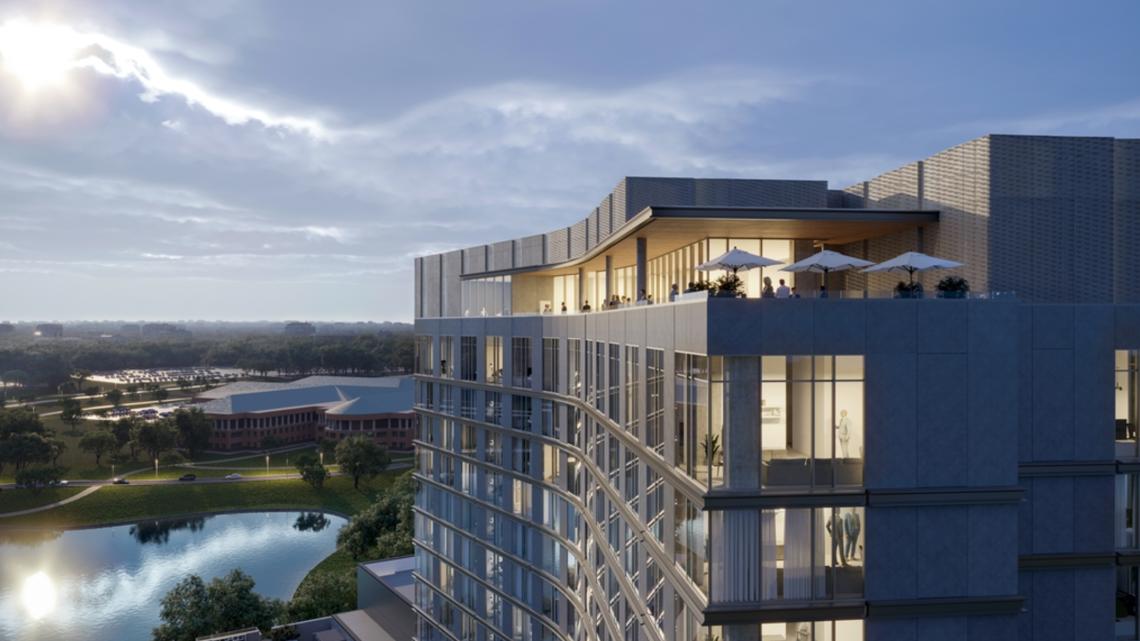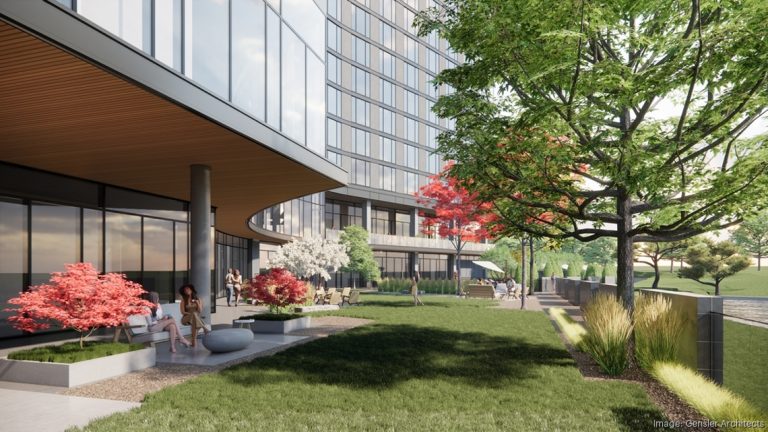“We try to incorporate a bit of Japanese aesthetic into everything we do,” says the design director.
PLANO, Texas — Editor’s note: The following article was Dallas Business Journal.
A spectacular and unique hotel soon to open in Plano is generating a lot of buzz for how it will blend Japanese sophistication with Texas southern charm.
Miyako Hotel will be located south of Toyota’s Legacy Campus near its North American headquarters and aims to cater to not only the company’s Japanese employees visiting the company, but also to a broader public looking for special, authentic experiences. It is scheduled to open in mid-2027.
Garfield Public Private LLC was recently announced as the hotel’s developer, five years after the project was first announced. The Dallas-based firm will be responsible for finalizing designs and permitting to bring the hotel closer to construction.
Garfield will work with the hotel’s design firm, Gensler, which began initial design plans for the project in April 2019. But the COVID-19 pandemic delayed some of the plans, and Gensler has been working more closely on the project over the past two years.
Gensler’s design team of about 10 people is currently working on the design development phase, which will include fine-tuning preliminary plans, selecting building materials and finishes, and integrating electrical and plumbing systems into the site. As soon as this work is completed, the teams will be closer to determining construction costs and a guaranteed maximum price for the project.
The Dallas Business Journal spoke with Alejandro Guerrero, design director at Gensler, to learn more about the project, which has been in the works since 2019.
Integrating Japanese aesthetics
Overall, Guerrero said the hotel plans to subtly reflect Japanese culture to give guests an authentic experience without coming across as overly elaborate. Japanese-inspired elements will be woven throughout the hotel, including wall motifs, wallpaper, teapots in rooms and bathroom configurations.
“I try to incorporate a bit of the Japanese aesthetic into everything I do,” he said.
Other thoughtful touches include an exterior lighting scheme inspired by the glowing lanterns commonly used at Asian celebrations, and the custom design of the hotel’s exterior ensures the building is visible from miles away at night.
“The interior lighting will feature an understated, clean style that matches the more subtle design touches typical of contemporary Japanese luxury design,” Guerrero said.
The hotel’s owner and builder, Kintetsu Enterprises of America, is also considering bringing some of its own art collection into the hotel, which will add to the hotel’s authenticity. The hotel’s public areas will function as gallery spaces, providing another element for guests to experience during their stay.
Japanese Garden Planning
A Japanese garden planned for the site will be a testament to the fusion of the two cultures and will feature cherry and maple trees along with plants native to North Texas, helping to conserve water resources and maintain the area’s natural biodiversity.
Blending two different outdoor aesthetics can be an even more delicate task than designing the interior: In Japanese architecture, the outdoors is tightly controlled and the landscape is treated like a work of art, while Texas outdoor landscaping tends to be more casual and feature large porches.
“Given our climate, it’s also important that the outdoor (environment) protects occupants from the outside,” Guerrero said.
The garden near the hotel is inspired by Japanese culture and includes several water features, shading elements, sculptures, etc. The soil materials used in the garden include gravel and sand.
Additionally, the gardens are not far from a six-acre reservoir that will be used to create the feel of a luxury waterfront hotel.
“Personalized” hospitality culture
Japan’s hospitality-centric culture revolves around providing individual care and attention to guests, which is slightly different to Western customer service, which focuses on the holistic experience.
“The way they greet guests, the way they greet guests, the personal attention they give guests as they find their way and move through the space… that’s going to be something very unique and special that will distinguish this hotel from other hotels in the area,” Guerrero said.
Food is a key way the hotel interacts with its guests and immerses them in Japanese culture, and a special bakery selling Japanese pastries decorated like works of art will be available to both hotel guests and visitors.
The rooftop bar will also feature teppanyaki, a style similar to hibachi cuisine, and there will also be several opportunities for private dining experiences that promise to offer guests even more personalized treatment.


In addition to a spacious pool where people can swim, the site will also feature spa-like amenities, including an outdoor steam room and Jacuzzi.
Guerrero expects the hotel will be one of a kind in North Texas when completed. There are two Miyako Hotels in the United States, both in California.
“It’s going to be very authentic in the sense that it’s not going to try to bring in a theme or bring in elements that would feel out of place,” he said. “The idea is to reflect and blend Japanese culture in a very elegant and very subtle way.”

